Testing times - sustainability anyone?
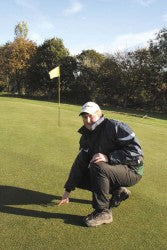 One year on Paul Lowe, Head Greenkeeper at Bromborough Golf Club on the Wirral, talks about how his move to sustainability is going and offers some sound advice on networking.
One year on Paul Lowe, Head Greenkeeper at Bromborough Golf Club on the Wirral, talks about how his move to sustainability is going and offers some sound advice on networking.
It's been just over a year since my last article, and what a year! Probably the most testing we have experienced. The poor weather and extreme growth has tested every greenkeeper. Our machines have been continually on the go, as have we. Both man and machine are getting tired and are in need of a service, or a rest at least. If all this is not enough we are hit with the credit crunch, or whatever it's called. But, the harsh reality is, the revenue is not as plentiful as it was some years ago. Along with the poor weather we are all tightening our financial belts.
In my last article I explained about our quest for a sustainable future. Climbing the sustainable ladder, whilst still reaching members' high expectations, will always be difficult.
So, with the current climate, was last year a good time to start on our sustainable quest? Yes, I believe it was.
In times of adversity comes an opportunity
This year the weather has meant the financial strain has meant we are becoming more frugal. Our greens are already expensive to maintain, they are 100% Poa, thatchy, soft and unsustainable, and this summer's rain has only made matters worse. The term unsustainable is often used loosely, but I believe our greens were truly unsustainable. If we had continued in the same vein and kept with the high input regimes, the thatch would continue to grow and our greens would have no future. Our finances could not sustain the amount needed to produce a good surface for the majority of the year. And, with the future looking no better, a change was necessary.
Despite things looking so bleak an opportunity has arisen. I believe we are left with little choice. Some things are more important than colour and the target style golf our amateur hackers desire. For example:
• Financial cost
• Long term playing quality
• Environmental impact
• Future chemical restrictions
• Social responsibility and public relations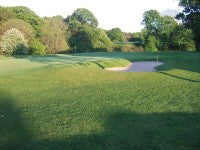
The message is loud and clear, if we are not managing in a sustainable way we simply have no future. As a Course Manager it is my responsibility to relay this message to my members.
How we made our first step?
Well, I am lucky to have a good team around me and teamwork is very important. Everyone at the club needs to be involved and well informed; all the greenkeeping staff, committee, our STRI consultant agronomist, ecologist, architect, golf professional - everyone is supportive in our quest. But we needed more than support, we needed to:
• Benchmark the course
• Produce an action plan
• Gather support and consistency
• Communicate, communicate and communicate
• Document evidence and produce policy documents
• Create the right environment
The Ginger Bread Men
I also have the invaluable support of 'The Gingerbread Men'. I realise some disapprove but, hopefully, I can alleviate some of your concerns and you will have a little more appreciation of our group. Better still, maybe start your own networking group.
Firstly, we are a bunch of humble greenkeepers who are networking together, helping each other, supporting each other and, indeed, 'striving' for a more sustainable/traditional/natural (call it what you like) golf course. We do this with the backing from the R&A and our home unions. This has been published as 'bad news for golf', but I strongly disagree, and this is why.
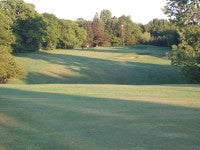 Greenkeeping is a lonely place at times. The fact that greenkeepers are working together and supporting each other in this difficult industry, and through these difficult times, has to be a good thing. Maintaining a golf course can be stressful at times and the greatest form of stress is working alone! We are suggesting that other greenkeepers (no matter what grass species you manage) could set up their own networking group, or just simply give your neighbours a call. It works, believe me.
Greenkeeping is a lonely place at times. The fact that greenkeepers are working together and supporting each other in this difficult industry, and through these difficult times, has to be a good thing. Maintaining a golf course can be stressful at times and the greatest form of stress is working alone! We are suggesting that other greenkeepers (no matter what grass species you manage) could set up their own networking group, or just simply give your neighbours a call. It works, believe me.
No man is an island!
Gaining knowledge from other greenkeepers, seeing first hand the successes and failures of others, avoiding the pitfalls, implementing others achievements and passing on our experiences has to be a good thing.
It is a simple, yet great, idea, originated by the Danish greenkeepers, and it works. The R&A realised the value of networking and supporting each other, and helped us get together. I know they would like other greenkeepers to do the same.
One thing I need to make clear - The Gingerbread men are NOT about grass species. We are about supporting and helping each other.
It was relatively easy for us to set up because we were already friends. But, it is still relatively simple, really ... just go and talk to your neighbour. If you are in close proximity why not start meeting up and exchanging ideas. But don't stop there; share your successes and failures, exchange maintenance records, policy documents and, even, secrets. Hold forum nights and presentations for each other's members, invite committees from other clubs to walk each other's course ... the options are endless.
So, in essence, you may already have your group. You all have a mutual respect and you support each other. We all need some advice from time to time, and I am sure we would be only too willing to help.
At my last open forum, four of the gingerbread men attended. They talked to my members, both one to one and addressing the room. They spoke brilliantly which helped gain enormous respect for our profession.
Another thing we do is invite the Greens Chairman and Committee to the nights, or just a friendly visit to each other's course, we sometimes take them for a game of golf. Has there ever been a more important time for support? I think not.
Communication
This is the most important thing to master. After we gather the support and all the documented evidence, it's then time to convey the changes to the members:
• Policy documents
• Open forums and Q&A nights
• Newsletters and emails
• Progress reports
• Course walks
• One to one discussions
The entire key to success is centred on communication.
Our first port of call was to produce a Policy Document that highlighted our objectives and goals. We told the members about th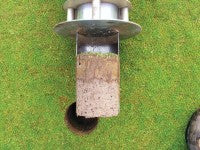 e plans in a short presentation, and then we held an Open Forum for the members to ask questions.
e plans in a short presentation, and then we held an Open Forum for the members to ask questions.
We send weekly emails to our members and put the reports on the notice boards. The biggest underlying factor for success is to have the members support. It's important to keep the information simple so that they understand.
It's also important to appreciate that the average golfer will come out with ridiculous comments but, sometimes, they will have a good point to make. It's all part of communicating and, most importantly, it's listening.
Creating the right environment
Before we embarked on an expensive over-seeding programme we needed to create a better environment, particularly on the greens:
• Improve plant energy/photosynthesis
• Improve drainage
• Reduce thatch
• Improve airflow
• Reduce fertilisers, chemical and water applications
• Disturbance (as much as possible) Theory
A lot has been written recently about the importance of carbohydrates, and I agree totally. A plant needs energy, and this comes from carbohydrates. The plant gets its carbohydrates from sunlight / photosynthesis. Simple. Some people are endorsing sugars and, again, I agree that sugars may have a place.
However, I like things fixed if possible. I like to give the grass plant every opportunity to replenish its own natural carbohydrate reserve. When a green is surrounded by sycamores it will inevitably lack sunlight and energy and, therefore, recovery rate will be slower. The answer is not in the bottle, it's the chainsaw!
The same applies to cutting at 2mm-3mm. The greens will be under stress due to the lack of leaf -photosynthesis, carbohydrates, energy, recovery rate, call it what you like. The problem is the height of cut.
So, we lifted the height of cut and removed the problem trees.
Our biggest task was to remove the thatch. Continual aeration has been the key. Our aim to aerate every week was successful - last year we managed fifty eight times. We used an array of implements, different sized solid tines, deep slitting, shallow slitting, hollow tines and a light sarrel roll. We have tried to fill every hole with topdressing to encourage a firmer, truer surface. We also followed every operation with the vibrating rollers and a good cut. This ensured the surface was back as quick as possible 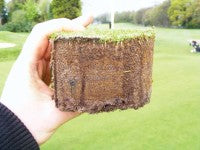
We have limited our chemical, fertiliser and water applications as much as possible - but not too quickly or we would find greens without any grass, and some very disgruntled members. We needed to be sensible. We suffered with anthracnose, so a gentle feed was necessary. The most important thing is the pace at which change is implemented. Reducing the water has been a problem because Mother Nature kept throwing it down.
Where are we now?
We have made considerable progress. In just one year, and in dreadfully wet weather conditions, the thatch/root structure is showing signs of improvement. We are seeing natural bent grasses appear. We have reduced feed from 250kg N to 90kg N. We have reduced fungicide input from 10-14 applications to just four. We have lifted the summer cutting height from between 1.8-3mm to 4-5mm.
Maybe slight improvements, but we have stopped the rot. We are now sustainable. Every year I expect improvements, healthier greens, less financial strain, and better all year round quality.
The beginning is the hardest part, continual disturbance and slower greens have tested my members and my communication skills. Soon we will implement a seeding programme and the Disturbance Theory can kick in. Our future is looking brighter!
